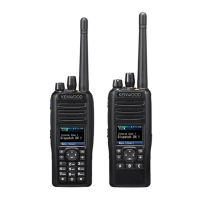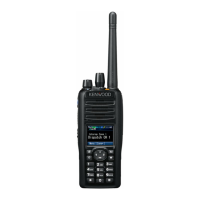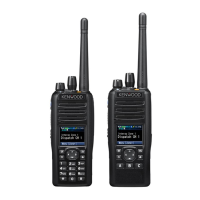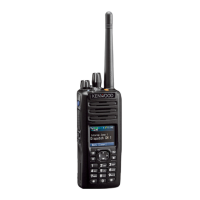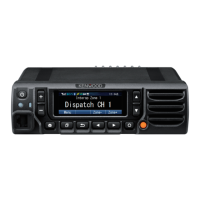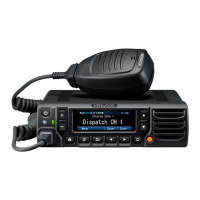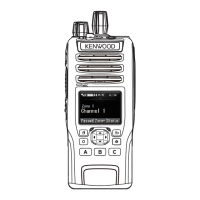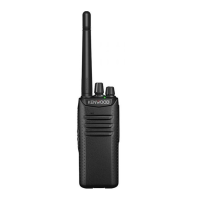1.17
Receiving GPS Data
The base station receiving GPS data from the mobile station transceiver can send the GPS data to a PC as serial commands.
If a PC installed with a mapping application is connected to the communication port of the base station transceiver, the
location information of mobile station transceivers appears on a map on the PC display. This function enables a dispatch
control or traffic control system.
Also,
if a mobile station transceiver connecting to a GPS receiver unit or having a built-in GPS receiver unit receives location
information (GPS data) from a GPS satellite, the current location information of the own transceiver can be displayed on
the LCD.
Note
0
The GPS data acquired from the GPS satellite can be stored at certain intervals in both the internal memory of the
transceiver and a microSDHC card. (Refer to Common FUNC Storing the GPS Data (GPS Data Storage).)
0
For a transceiver receiving GPS data, “Data + GPS Data Output” needs to be assigned to the communication port
connected to a PC with the mapping application installed. (Refer to Common FUNC Available Functions for COM Port.)
Map Header
Whether to send data to the mapping application when the base station transceiver receives the GPS data from the mobile
station transceiver can be configured.
The following are the type of data that can be sent to the mapping application.
Table 1-20 Map Header
Data Description
$GPGGA (NMEA)
Upon receipt of the GPS data, the base station transceiver extracts the $GPGGA data in the
NMEA-0183 format from the received GPS data and sends the extracted data from the
communication port.
$GPGLL (NMEA)
Upon receipt of the GPS data, the base station transceiver extracts the $GPGLL data in the
NMEA-0183 format from the received GPS data and sends the extracted data from the
communication port.
$GPRMC (NMEA)
Upon receipt of the GPS data, the base station transceiver extracts the $GPRMC data in the
NMEA-0183 format from the received GPS data and sends the extracted data from the
communication port.
$PKNDS (KW)
Upon receipt of the GPS data, the base station transceiver creates the $PKNDS data which is the
KENWOOD proprietary sentence from the received GPS data and sends the created data from
the communication port.
The
$PKNDS data contains the $GPRMC data in the NMEA-0183 format, Unit ID, and the status
information.
$PKNID (KW)
Upon receipt of the GPS data, the base station transceiver creates the $PKNID data which is the
KENWOOD proprietary sentence from the received GPS data and sends the created data from
the communication port.
The base station transceiver extracts only Unit ID and the status information from the received
GPS data and sends the extracted data from the communication port of the repeater.
This sentence is recommended to be used along with $GPGGA (NMEA), $GPGLL (NMEA) or
$GPRMC (NMEA). For example, if $GPGGA (NMEA) and $PKNID are used simultaneously, the
base
station transceiver sends from the communication port of the repeater the $GPGGA data in
addition to the Unit ID and the status information extracted from the GPS data.
$PKNSH (KW)
Upon receipt of the GPS data, the base station transceiver creates the $PKNSH data which is the
KENWOOD proprietary sentence from the received GPS data and sends the created data from
the
communication port. The $PKNSH data contains the $GPGLL data in the NMEA-0183 format
and the Unit ID.
In order to send GPS data in Emergency Mode or by pressing the PTT switch, this sentence is
used.
1 DMR CONVENTIONAL SYSTEM
1.17 Receiving GPS Data
DMR FUNC (K, F)/Ver 2.20 73
CONTENTS INDEX
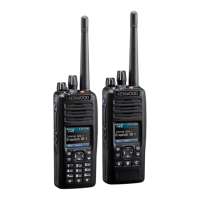
